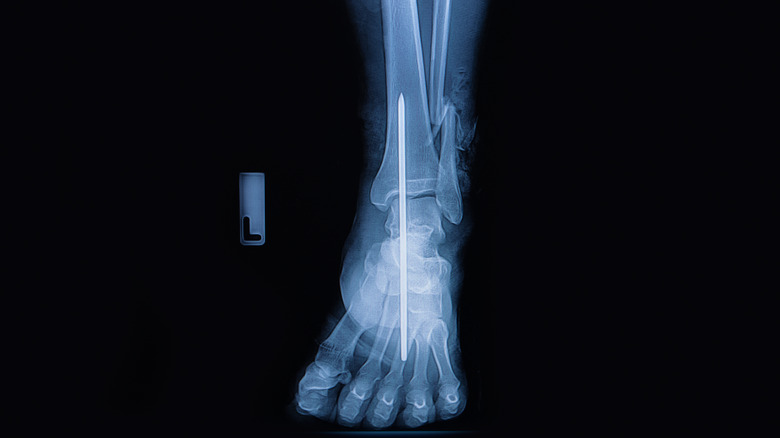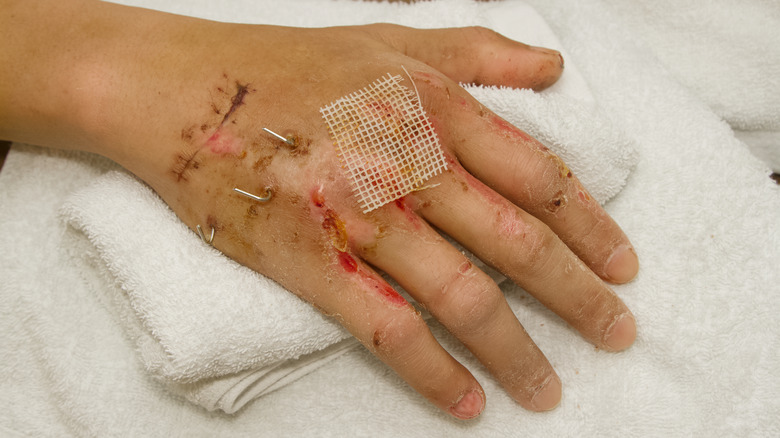What's It's Really Like To Have Pins In Your Bones
In the days before X-ray machines and sterile medical environments, people still broke bones, just as they do today. It used to be that fractured and broken bones had one basic method of treatment available to health practitioners — setting it back in the correct position as best as possible (using traction if necessary), and then stabilizing the broken bone through some type of splint or cast. This often resulted in awkward healing which led to deformity, not to mention prolonged pain (via EXARC.net).
Fast forward to our time, and doctors now have several effective tools at their disposal for setting a broken bone and promoting good healing including X-ray machines, MRIs, and better wound care. While some bone fractures require only an external cast or splint to heal properly, others need more invasive surgical treatments, especially in the case of severe breaks in which the bone has punctured through the skin, or fractures in delicate joints (via Healthline).
Pins are usually removed after healing has begun
In these instances, surgical treatment might require implants using metal plates, rods, pins, wires, screws, and/or external fixators, which are attached in or alongside the broken bone (via OrthoInfo). The bone is first realigned back into normal position and then held in place with one or more of these special implements, which are made of durable stainless steel and titanium. While pins are usually removed once healing has begun, more deeply embedded implants may be left in the body permanently. Which option is best depends on the severity and location of the break.
In any case, the goal is the same as it was in centuries past — to stabilize the broken bone until it heals and can support weight and movement again.
Fortunately, complications from bone fracture repair surgeries are rare, and patients often can't feel the metal implants after healing has occurred, unless the pins, plates, or screws are in a part of the body which has very little soft tissue padding surrounding it (via Healthline).


